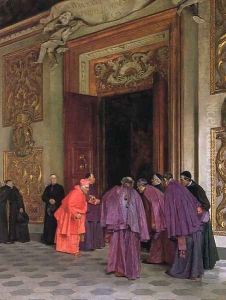Tito-Giovanni Lessi Paintings
Tito-Giovanni Lessi was an Italian painter, born in 1858 in Florence, Italy, and died in 1917. Lessi was part of the Italian art movement of the late 19th and early 20th centuries, a period marked by a transition from traditional to more innovative and expressive forms of art. Although not as widely recognized as some of his contemporaries, Lessi made significant contributions to the Italian art scene, particularly in the realm of portrait and genre painting.
Lessi's work was deeply influenced by the Macchiaioli group, a movement that prefigured Impressionism in Italy. The Macchiaioli emphasized the use of 'macchie' or patches of color to capture the effects of light and atmosphere in the landscape, an approach that Lessi adapted and applied to his own work. However, Lessi's style was not confined to this influence alone. He was known for his versatility, exploring different techniques and themes throughout his career. His paintings often depicted everyday life, capturing the nuances of the human condition with sensitivity and a keen eye for detail.
Educated at the Accademia di Belle Arti in Florence, Lessi was part of an artistic milieu that included many of the leading Italian artists of his time. His education and early career were marked by the academic rigour of his training, but he soon began to explore beyond traditional boundaries, seeking to express a more personal and emotional response to his subjects. Lessi's portraits, in particular, are noted for their psychological depth and the ability of the artist to reveal the inner life of his subjects.
Throughout his career, Lessi exhibited his work widely, both in Italy and abroad, gaining recognition and accolades for his contributions to Italian art. His paintings are characterized by their vibrant color palette, attention to detail, and the emotional intensity of the scenes depicted. Despite his passing in 1917, Lessi's legacy endures, with his works held in collections and museums in Italy and around the world, continuing to inspire and captivate audiences with their timeless beauty and profound humanism.



